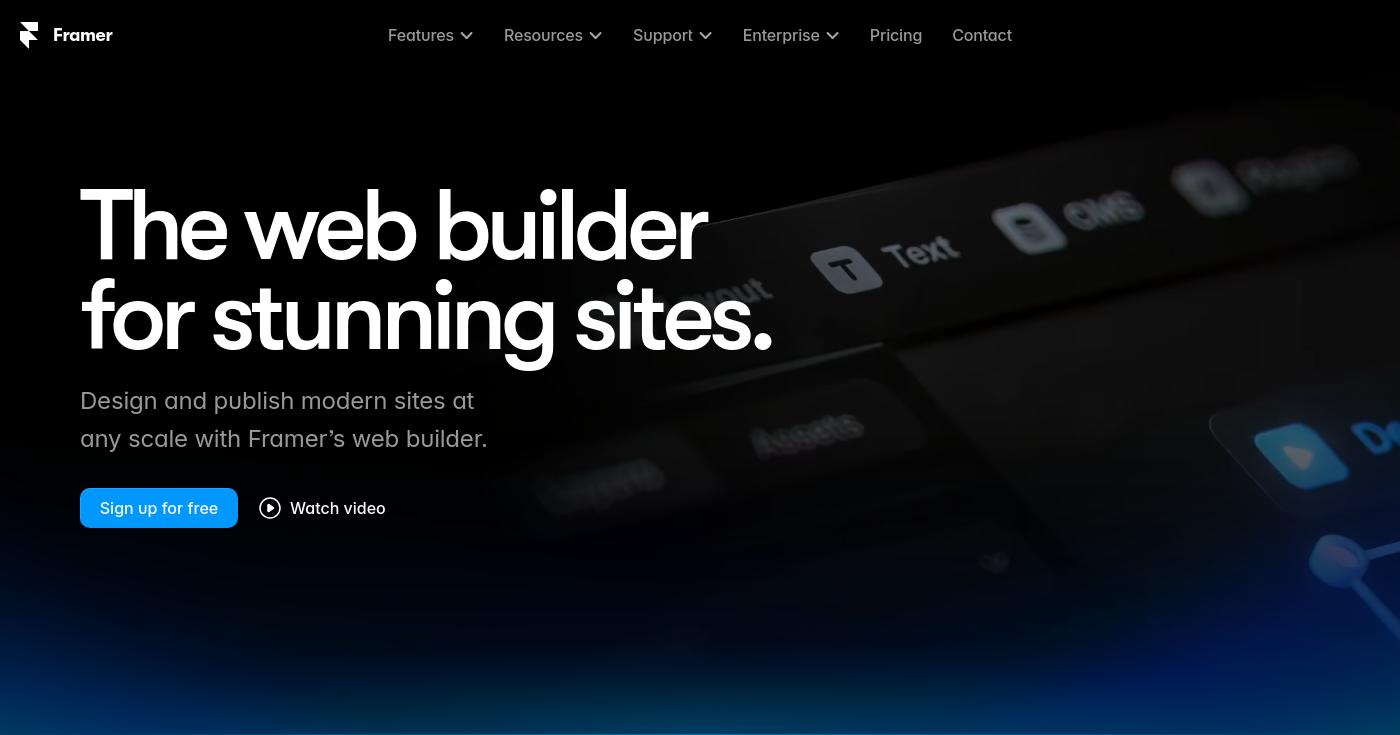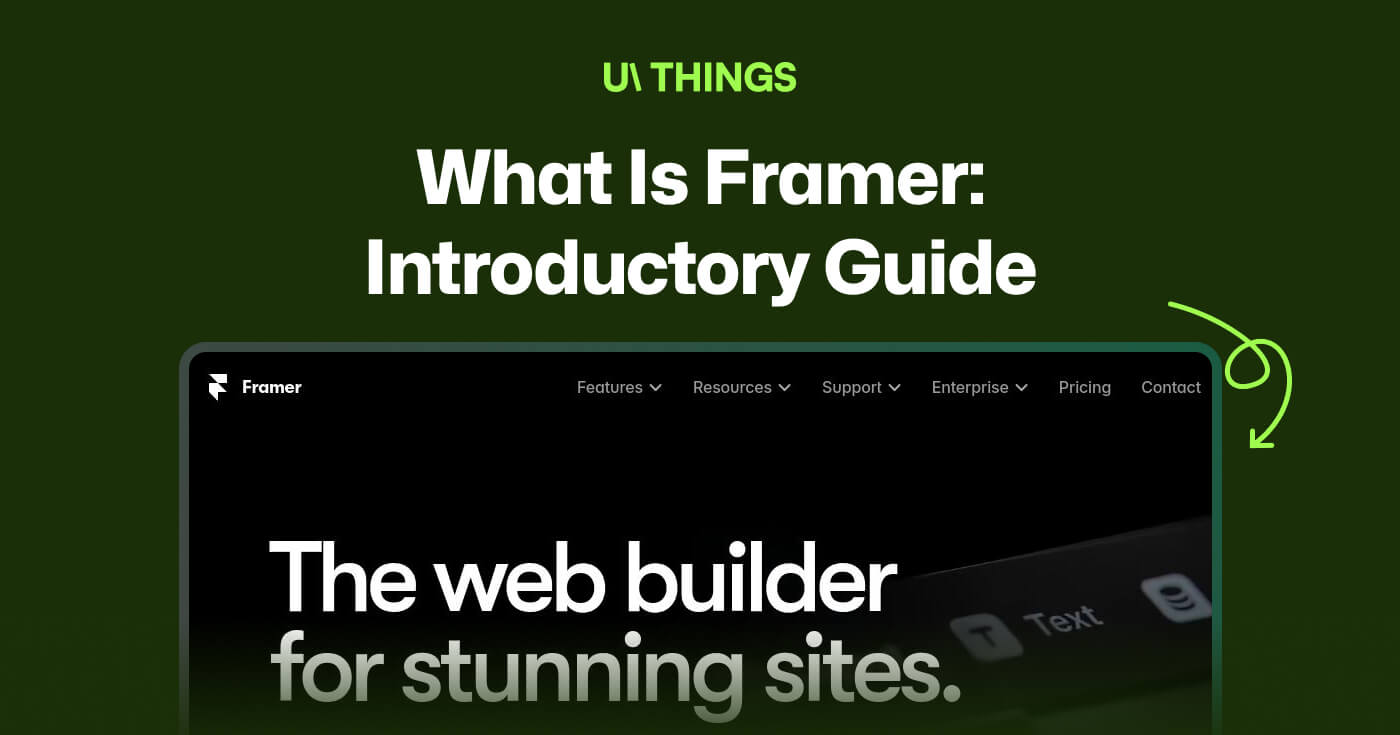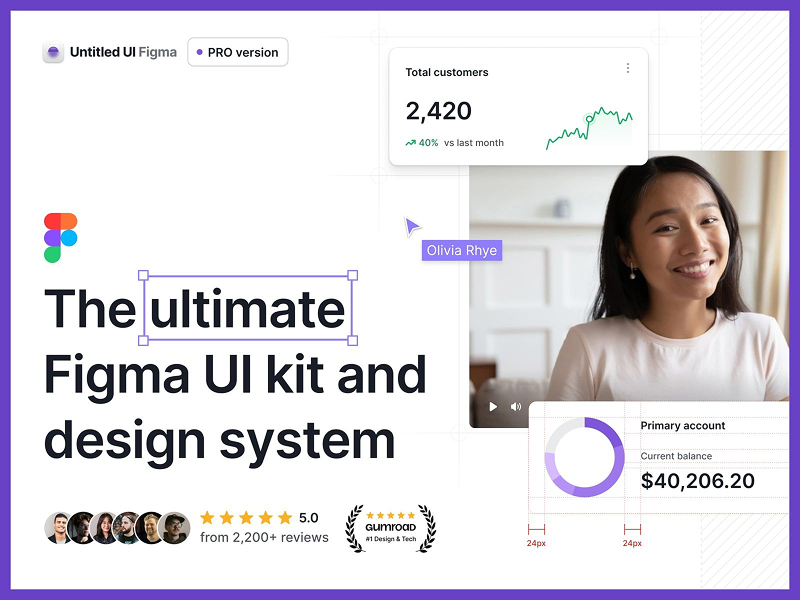Framer is a powerful design and prototyping tool that enables you to create interactive websites and applications easily. Its user-friendly interface allows both designers and developers to bridge the gap between visual design and code.
With over 21,500 community members, Framer boasts impressive growth, supported by $60 million in funding, with a recent Series C round totaling $27 million in 2023. Framer is increasingly gaining traction in the design landscape as a no-code solution that empowers creative professionals.
In this guide, you’ll explore what Framer is, how it works, its features and benefits, use cases, alternatives and competitors, and pricing plans.
This short guide will teach you everything you need to know about Framer.
Key Takeaways
Framer simplifies web design by allowing users to create interactive projects without extensive coding skills.
It provides real-time collaboration features, enabling teams to work together seamlessly.
The platform supports a range of design needs, from prototyping to building responsive websites.
Framer simplifies web design by allowing users to create interactive projects without extensive coding skills.
It provides real-time collaboration features, enabling teams to work together seamlessly.
The platform supports a range of design needs, from prototyping to building responsive websites.
What Is Framer?
Framer is a design and prototyping tool that allows users to build interactive websites and applications, combining visual design with coding capabilities. It fosters creativity while making web development accessible to individuals without coding knowledge.

Launched in 2014, Framer has evolved from a prototyping tool into a full-featured web design platform. Its aim is to empower designers and teams to collaborate, share designs in real-time, and create responsive layouts efficiently.
Framer solves several problems for designers, including the need for a unified platform that supports both design and development processes effectively, enabling a smoother transition from concept to execution.
How Framer Works
Framer employs a drag-and-drop interface that simplifies the design creation process. Users can choose from a variety of pre-built components and integrate custom JavaScript scripts to enhance functionality. The platform also allows for importing designs directly from tools like Figma.
Real-world Example: Many businesses utilize Framer to build their websites quickly, including notable brands that have reported increased user engagement through interactive web designs.
Framer Use Cases
Framer caters to various design needs. Here are some key use cases:
- Web Design: Create responsive websites without needing deep coding skills.
- Prototyping: Quickly turn your design concepts into interactive prototypes.
- Collaboration: Facilitate teamwork among design and development teams through real-time editing.
- E-commerce: Build attractive product landing pages seamlessly integrated with various e-commerce tools.
A real-world example includes companies using Framer to create engaging landing pages that drive conversions, demonstrating its effectiveness in marketing strategies.
Framer Features and Benefits
Framer offers a wide array of features and benefits that contribute to its popularity:
- No-Code Website Building: Users can create websites without writing code, thanks to the intuitive interface.
- Robust Component Library: A vast range of pre-designed elements speeds up the design process.
- Real-Time Collaboration: Teams can work simultaneously on designs, speeding up the feedback loop.
- SEO Tools: Integrated features that optimize sites for search engines help enhance visibility.
- Interactive Components: Enhance user experience with animations and interactivity easily integrated into designs.
Framer Integrations
Framer supports integrations with various tools to enhance productivity:
- Zapier: Automate tasks across multiple applications seamlessly.
- Slack: Enable team communication and updates directly from the Framer platform.
- Google Analytics: Track site performance and user interactions efficiently.
- Mailchimp: Manage email marketing campaigns through your Framer site.
- Shopify: Simplify e-commerce setup by integrating with one of the leading e-commerce platforms.
Who Is Framer For?
Framer is designed for a diverse range of users, including:
- Designers and Developers: Individuals seeking to create prototypes and collaborative designs.
- Marketers and Businesses: Teams needing to develop landing pages or promotional websites quickly.
- Agencies: Companies that provide web design services and require efficient tools to meet client demands.
- Students: Those learning design and coding can benefit from a hands-on approach to creating web projects.
- Entrepreneurs: Individuals looking to develop their online presence with minimum coding knowledge.
Framer Alternatives and Competitors
While Framer is robust, several alternatives cater to similar needs:
- Webflow: A comprehensive platform for designing websites without writing code.
- Figma: Primarily focused on UI design, it also provides prototyping capabilities.
- Adobe XD: A design and prototyping tool popular among design teams.
- Wix: A user-friendly website builder featuring drag-and-drop functionality but less customizable than Framer.
- Sketch: A vector graphics editor used for UI and web design, favored by many designers.
Framer Pricing Plans
Framer offers a variety of pricing structures to cater to different needs:
- Free Plan: Access to basic features with limited functionality.
- Mini Plan: Starting at $5/month, this plan enables custom domain usage and basic analytics.
- Basic Plan: Priced at $15/month, this includes unlimited pages and increased visitor limits.
- Pro Plan: At $30/month, you gain access to all features, advanced analytics, and better visitor support.
For more details, visit the Framer Pricing Page.
Frequently Asked Questions
Here are some common questions about Framer:
What types of projects can I create with Framer?
You can create websites, prototypes, and landing pages using Framer.
Does Framer require coding skills?
No, Framer is designed for users with little to no coding experience.
Can I import designs from Figma?
Yes, you can seamlessly import your designs from Figma to Framer.
What types of templates does Framer offer?
Framer provides a variety of templates across different categories for quick setup.
Is there a community for Framer users?
Yes, Framer has a vibrant community where users share tips, resources, and support.
Is Framer free or paid?
Framer offers both free and paid plans, allowing users to choose based on their needs.
Conclusion: Embrace Framer for Your Design Needs
In summary, Framer is an innovative tool that empowers designers and teams to create stunning, interactive websites without needing extensive coding knowledge.
It not only enhances productivity through real-time collaboration but also simplifies the design process with a rich set of features tailored for modern design challenges.
For designers looking to elevate their projects and streamline workflows, Framer is a valuable asset worth exploring.




